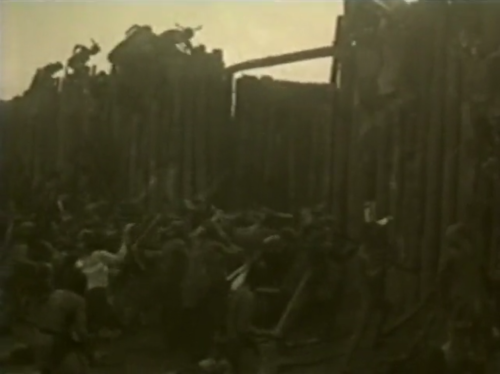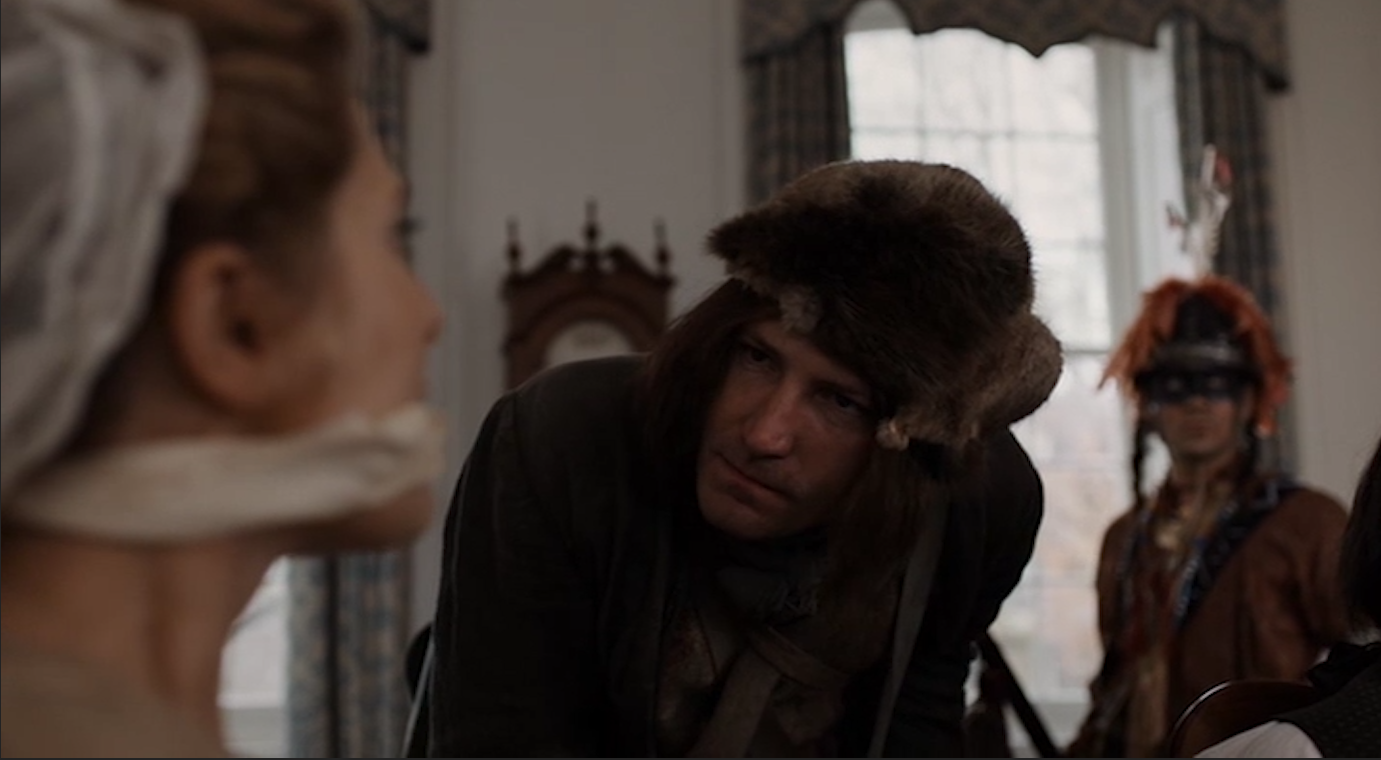
Image taken from D. W. Griffith’s “America” (1924). American Indians fighting on the side of the British storm the gates of a colonists’ fort during the American Revolution.
Visual representations of Native Americans in the United States have changed very little since the invention of film. With few exceptions, almost every American Indian character that appears on screens in the United States embodies some aspect of the two main stereotypical categories which have been in use since colonization of North America began.2 Those stereotypes are the “Good Indian,” who helps the European or European American hero or does not actively resist him, and the “Bad Indian,” who opposes the story’s hero either through an ideological belief in the self-determination of their people, a predisposition to violence, or a generally villainous character makeup.
In this website, I will examine these representations of American Indians in works set during the American Revolutionary War in film, television, and in games. The works I examine here were produced between 1924 and 2019. From movies like D. W. Griffith’s America to the remastered edition of video game Assassin’s Creed III by Ubisoft and television shows such as Turn: Washington’s Spies from AMC, Native Americans are represented in the classic stereotypes, if represented at all.3 Though from the 1990s onwards there was a shift towards attempting to portray more positive images of American Indians than had been produced previously, it has resulted in less movement than one might expect. Assassin’s Creed III (ACIII) is particularly important to this analysis, both for its media type of video game and that the main character, Ratonhnhaké:ton, also known as Connor, is a member of the Mohawk, the Kanienʼkehá꞉ka nation. I argue that ACIII is a revolutionary western partly for the identity of the main protagonist and partly for how it foregrounds the interests, involvement, and fate of the Kanienʼkehá꞉ka people in the American Revolution.

Image taken from “Turn: Washington’s Spies” (2014-2017), season 3, episode 3. The unnamed, armed American Indian character is located where the majority of Native characters are placed in visual media in the United States: in the background, unless committing violence in the foreground.
As a part of this analysis, I will present a framework for analyzing Native American characters in film, television, and video games that can be utilized to evaluate the portrayal’s measure of respect and authenticity for Native people. Using this framework as the foundation of the analysis, I reviewed more than 170 hours of visual materials relating to the American Revolution and found common themes of stereotypes, violence, and non-representation of American Indians in the entirety of the body of work. In a list of forty-four works of visual media set during the American Revolution, only eight had visual representations of American Indians, and of those eight, only four had significant amounts. For this many works to be set during the American Revolution, during which Native Americans played significant roles, to have less than twenty percent of the works contain representations of Native Americans and less than ten percent portraying a significant presence of American Indians is remarkable. The amount of screen time given to Native Americans supports the result of my analysis on the substance of the screen time they do have. By a large margin, the majority of representations of American Indians in film, television, and video games in the United States set during the American Revolution are disrespectful, inauthentic, or minimizing portrayals of Native nations and peoples.
2. Fitzgerald, 8-10. Marubbio, 3-4.
3. A list of visual media investigated for this study can be found in the bibliography.
